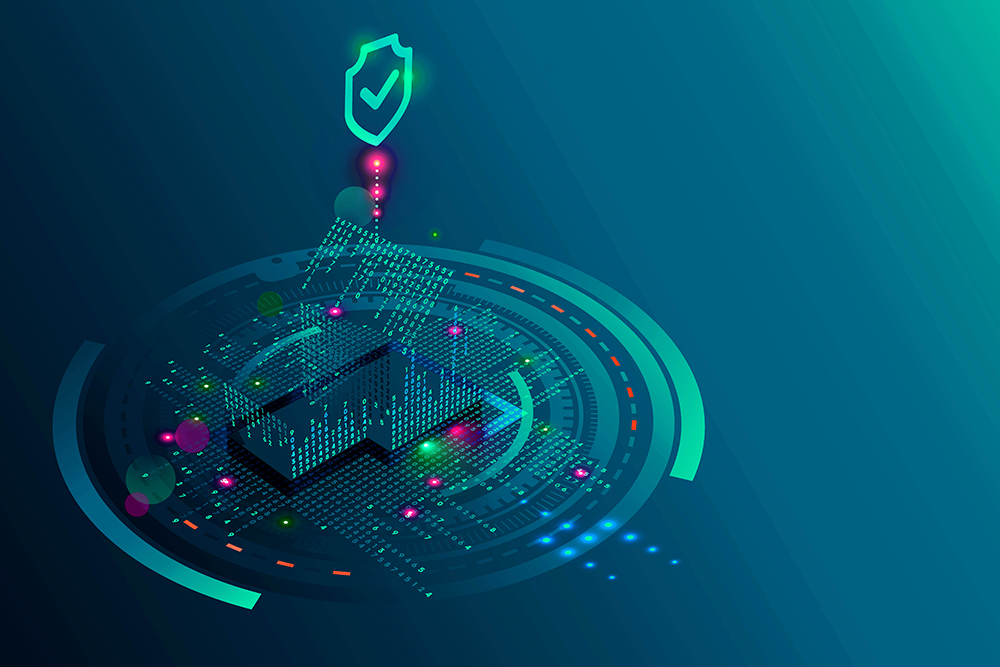The accreditations your business needs to be cyber security certified
Cyber security is becoming an increasingly important investment for small to large-scale businesses, as the sector sees exponential growth in technology and digital transformation. Though for some, the advantages are unclear. Reports show that privacy and security are hard to prioritise with 72% of consumers and executives reluctant to invest in something that “feels invisible” like behind-the-scenes security. By outlining the many benefits, and impact, that information security accreditations and certifications can have in preventing the risk of attack, the investment is made worthwhile.
With the number of data breaches, malware infections and cyber attacks on the rise year-on-year, the demand for skilled cyber security experts and cyber-aware business leaders has never been greater. This bears the question: what skills and expertise do we need to excel in the complex world of cyber security? Besides experience, accreditation and certification are the answer. But these responsibilities fall not just to IT professionals and c-suite executives, but all company staff to combat growing threats together. Knowledge is power, and power is protection.
Undertaking the necessary means to become security certified will show potential clients that you’ve committed to taking the necessary steps to keep them safe. Customers can be reassured that the security within your organisation has a level of validation, showing that you are a trusted provider in the cyber security field. By adhering to a high standard of security measures, your business will be able to continue to support the scale and success of its solutions, administering protection when customers need it the most.
To help protect your vital business data and operations, it’s worthwhile investing in cyber security certifications and accreditations to keep your workforce security smart. Though these are generally aimed at professionals with IT experience, there are also certifications in cyber security designed for business leaders with minimal knowledge. Online criminals know no boundaries – all the more reason to invest in cyber-upskilling within your business.
Cyber Essentials is a government-backed certification designed to increase cyber security within organisations, protecting them from falling victim to common cyber attacks. The requirements cover five main technical controls that aim to protect devices, internet connection, data and services. These include: software updates, firewalls and routers, malware protection, access control and secure configuration.
With two types of certifications – Cyber Essentials and Cyber Essentials Plus – you have greater control over the level of protection you wish to invest in. With Cyber Essentials Plus your business will receive the added benefit of a more hands-on technical verification approach, involving the administration of vulnerability assessments for additional assurance.
The benefits of having Cyber Essentials are:
- Safeguarding your business from 80% of common cyber attacks.
- Greater opportunity to acquire Government contracts and win new business opportunities that require the certification.
- Reassuring customers that you are dedicated to protecting your IT against cyber attacks and gaining a competitive edge in showing that you can execute this.
- Attracting new clients with increased cyber credibility and reputation.
- Having clear levels of cyber security outlined for long-term safety.
Note: In a recent announcement, the (NCSC) confirmed that updates would be made to the technical controls of its Cyber Essential scheme, coming into effect on the 24th January 2022. The updates will reflect the changes that businesses and governments need to adopt to remain cyber secure in the wake of increasing cyber crime. If your business has invested in Cyber Essentials, you may be affected by these changes. To keep your solution up-to-date, read more about update requirements in our recent blog here.
To find out more about how to obtain a Cyber Essentials certification for your business, visit the National Cyber Security Centre website here.
ISO 27001 is recognised internationally as an information security standard, offering a best practice framework for Information Security Management Systems (ISMS). The accreditation consists of 114 controls that can be used to better secure overall information security, protecting your most vital business assets like confidential information, brand image and other private details. Application of ISO 27001 is a fitting response to legal and customer requirements such as GDPR and potential security threats including cyber crime, data breaches, misuse, theft and viral attacks.
ISO 27001 has seen a 24.7% increase in worldwide certificates in 2020, thus highlighting its importance in maintaining information security compliance for businesses across the globe.
The benefits of the ISO 27001 certification are:
- Showing your commitment to following information security best practices.
- Providing your company with an expert evaluation of whether your critical, private information is adequately protected.
- The ability to identify and treat security threats according to the level and type of risk that your business is willing to take and tolerate.
- Meeting supply chain contracts that specify ISO 27001 as a must-have certification.
- Peace of mind knowing that you meet necessary security laws (e.g. GDPR).
- Improved customer and business partner confidence.
To find out how your business can achieve an accredited ISO 27001 certification, visit the International Organization for Standardization website here.
If your company operates on a consultancy basis or provides these additional services, then you may benefit from becoming a Certified Cyber Security Consultancy. The certification aims at providing support on a variety of complex cyber security issues to government, wider public sector and Critical National Infrastructure (CNI) organisations. Upon completion of the certification, consultancies can prove that their services meet the NCSC’s high-quality standard for specially tailored cyber security advice. Currently, consultancy companies can be certified to offer the following cyber services: audit and review, risk assessment, risk management and security architecture.
The benefits of becoming a CCSC are:
- Receiving expert cyber security advice from a network of certified professional NCSC Assured Service Providers.
- Exclusive access to member benefits with Tier 1 and Tier 2 options, such as an invitation to the annual CYBERUK event, priority NCSC support and quality management, membership of the Scheme CiSP group, an invitation to Master Class events or Community event workshops, and much more.
- To show that your company meets the NCSC’s standards as a trusted cyber consultancy, acting in the government’s name
To find out how your cyber consultancy could benefit from additional support from industry professionals, visit the National Cyber Security Centre website here.
A rise in cybercrime has generated an urge for cyber security professionals to join the sector. But the cyber security field is not easy to navigate, requiring candidates to invest in additional training and development. By increasing skill sets, individuals can arm themselves with the required knowledge to better understand how to defend against attack. With the implementation of certifications and accreditations, job-seekers and hiring employers can rest in the knowledge that career pathways are clear and businesses can be safeguarded by skilled workers.
By 2021, experts expect there to be 3.5 million unfilled cyber security jobs worldwide, one reason why thousands of professionals are turning their attention to cyber security.
If you’re seeking to recruit new talent to grow your workforce or searching for a role in cyber security yourself, here are the top certifications you should be looking for, as ranked by the most popular recruitment sites.
- Certified Information System Security Professional (CISSP)
- Certified Information Systems Auditor (CISA)
- Certified Information Security Manager (CISM)
- CompTIA Security+ Certified Ethical Hacker (CEH)
- UK Professional Development Academy – Cyber Security Beginner Certificate
- Lockcode Cyber Security – The Cyber Threat to UK Businesses Course
- Open University Open Learn – Introduction to Cyber Security Course
Having a compliant, industry-standard cyber plan in place can seem daunting if you’re just starting out, but it doesn’t need to be under our guidance. We’ll ensure your business is cyber security certified by selecting the right certifications and accreditations to undertake to meet specific security demands. The Infosec K2K portfolio of Policy and Process Assessments will help you to obtain the necessary accreditations to stay protected as part of a long-term strategy, not a box-ticking exercise. Take the next steps in protecting your business from the risk of cyber attack with the investment in industry-standard support and learning.
Find out how Infosec K2K’s specialist security assessments can keep your business protected in the long term.
Get in touch with us to find out more about how we can help you.




